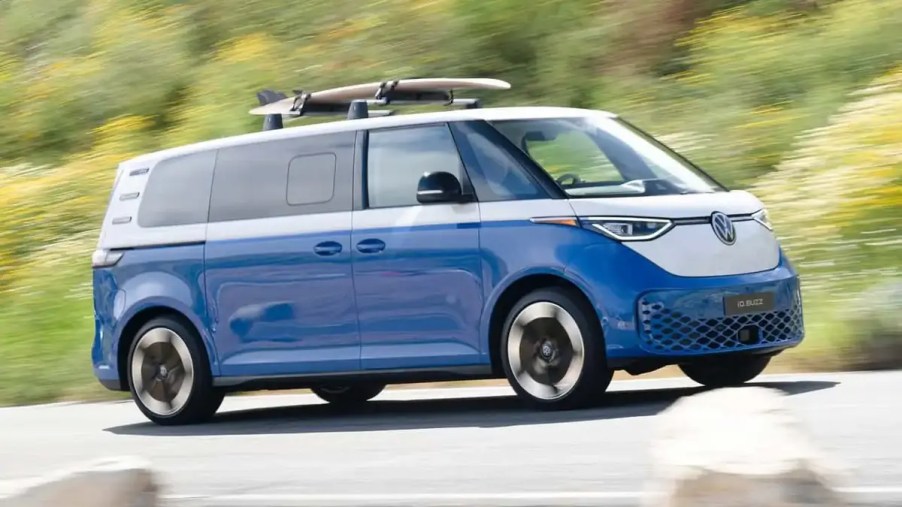
Volkswagen ID. Buzz Passes Moose Test
Few new cars are as exciting to me as the Volkswagen ID. Buzz. It is common for our friends across the way in Europe land to get cool cars that we can only pine for over here. This is doubly true for VW vans. So getting VW’s new electric van, the spiritual successor to the original VW van, feels like a dream come true. That said, we can enjoy the ID. Buzz even more now, knowing that it passed the infamous Moose Test.
What is the Moose Test?
The Moose Test or Elk Test, as it is sometimes called, is a maneuverability test for vehicles. This exercise involves a vehicle reaching 45 mph and evading two sets of cones. This test requires the vehicle to do a high-speed “S” shape. This proves whether or not a car can evade an obstacle that appears on the road without warning, much like a moose, elk, or deer might do, depending on where you live.
The reason “moose” is used most commonly is because, in 1997, the Swedish motor magazine Teknikens Värld together with the TV show Trafikmagasinet flipped a Mercedes-Benz A-Class luxury car in a test made to measure the car’s ability to avoid hitting a moose. Before this infamous incident, this was known boringly as the “evasive maneuver test.” It was a German Newspaper that coined the term.
Volkswagen ID. Buzz Moose Test
While the new VW electric van did surprisingly well on the Moose Test, the YouTube channel km77.com also ran through a slalom course.
As you might expect, the slalom run was tough for the bulky electric van. According to CarBuzz, the van was tested wearing some low-rolling resistance Continental EcoContact 6 Q tires. These non-performance tires, mixed with an underprepared ESC system, made for a tough time on the slalom course. Even still, the VW van did the slalom course faster than the 2023 Range Rover Sport with the twin-turbo V8.
However, the ID. Buzz wasn’t done testing there. The Moose Test was next, and the VW ID. Buzz was surprisingly good. It is worth noting that the model they tested was the European spec which has a shorter wheelbase and a different electric motor setup.
For the Moose Test, the reviewer approached the two sets of cones at 77 kph, roughly 48 mph. Although the driver hit two cones in the Moose Test, he said the van felt pretty well controlled. Although, ultimately, the van’s beefy body proved too much to wiggle through flawlessly. Once the tester brought the speed down to 44 mph, the VW van passed with flying colors. On the last run, the VW attempted a run at 50 mph. Needless to say, the driver bailed before finishing, as it was clear the van wasn’t going to make it.
What problems does the VW ID. Buzz have?

Again, the size of the vehicle is a tricky thing to overcome in terms of agility. Even though the van did much better than expected, there was one worrying issue. ESC or electronic stability control snaps into action when a car’s computer “thinks” it might lose stability. When this happened at higher speeds on the van test, the tester said the van would become less predictable. This is not ideal. Even still, the ESC didn’t go as rogue as some other similarly sized vehicles.
These tests might not hold the same weight as government-sanctioned tests by the NHTSA or IIHS, but these tests are real and practical. Most drivers have had to use evasive maneuvers at some point or another. Hell, if you live somewhere where deer are plentiful, you’ve probably done plenty of high-speed swerving. Tests like these show us how much we can trust the maneuverability of specific vehicles. Knowing your car’s limits could save lives.
Thankfully, the highly-anticipated Volkswagen ID. Buzz passes the Moose Test well enough to give us confidence and continue our excitement for the new electric van.





